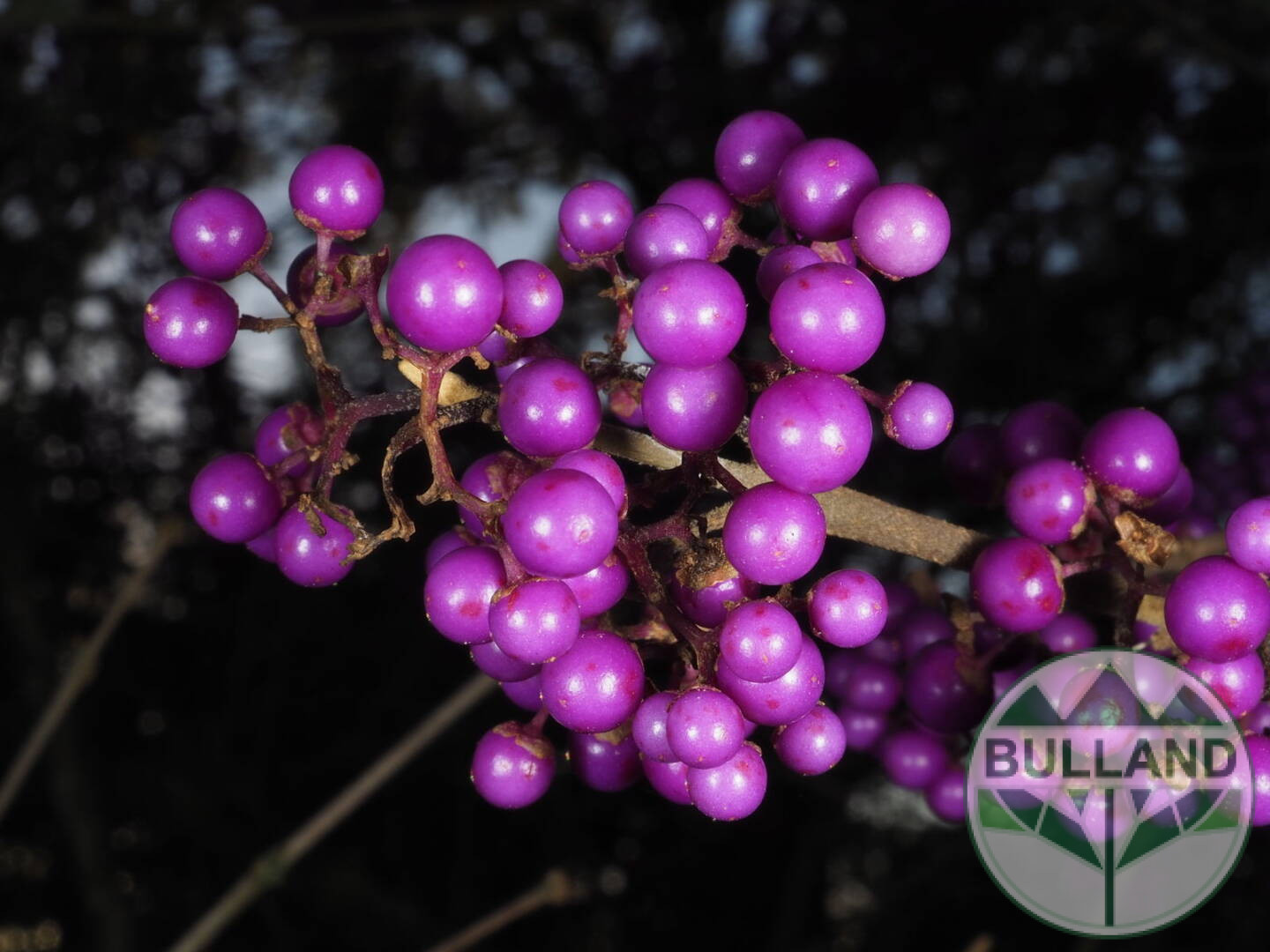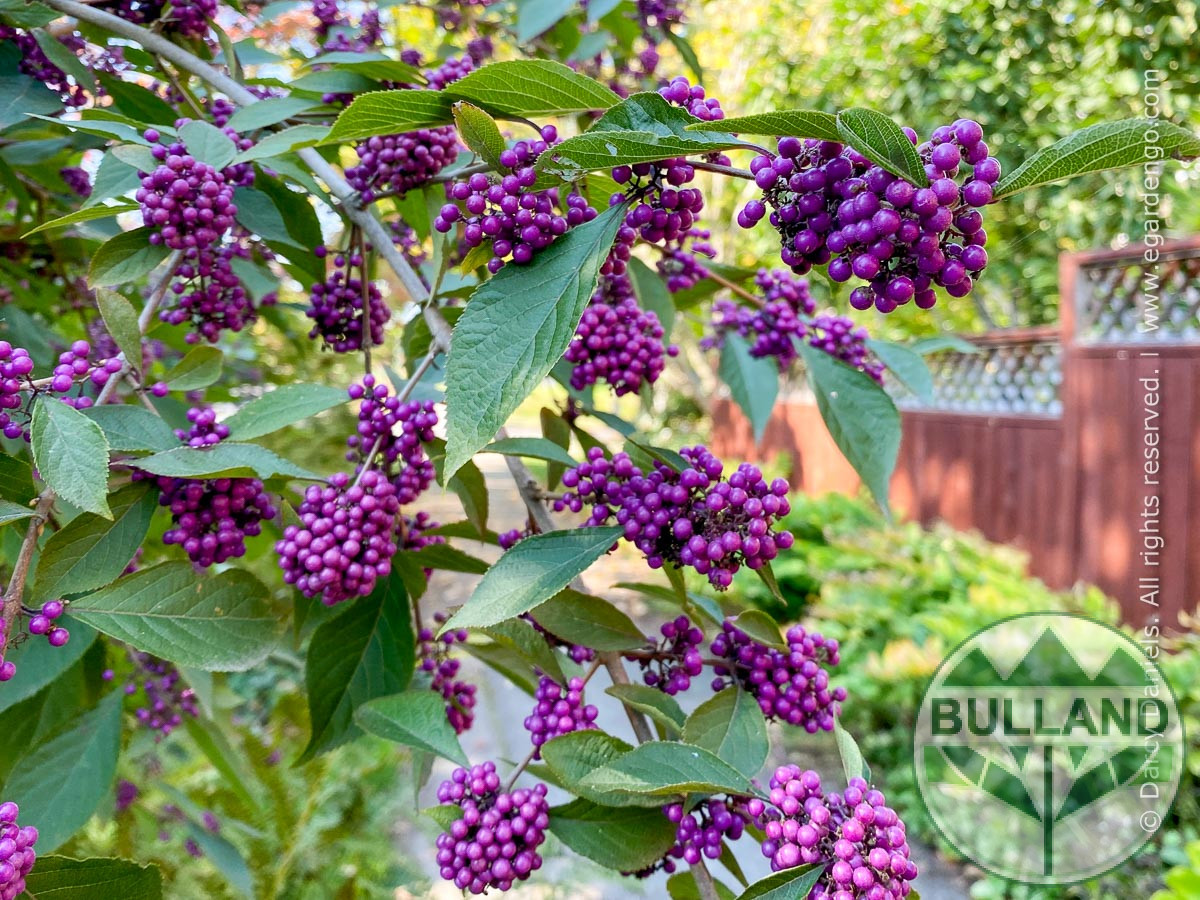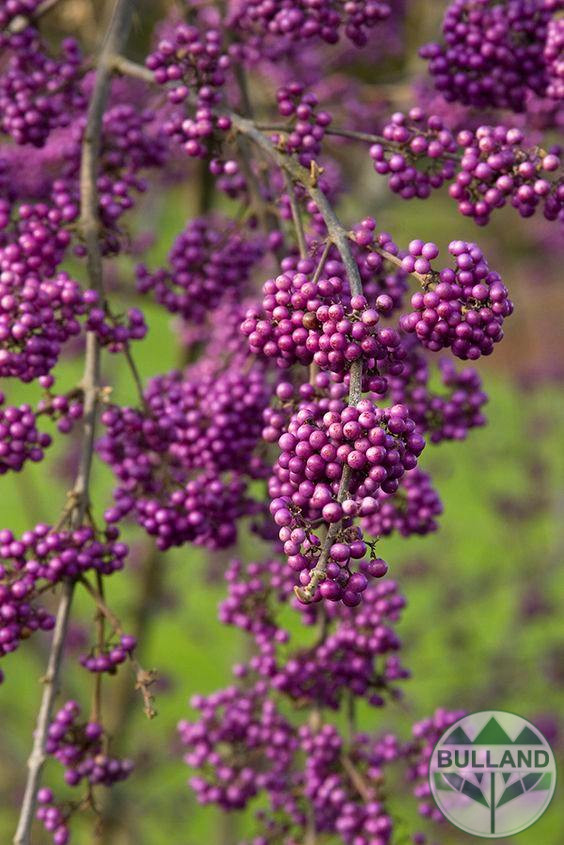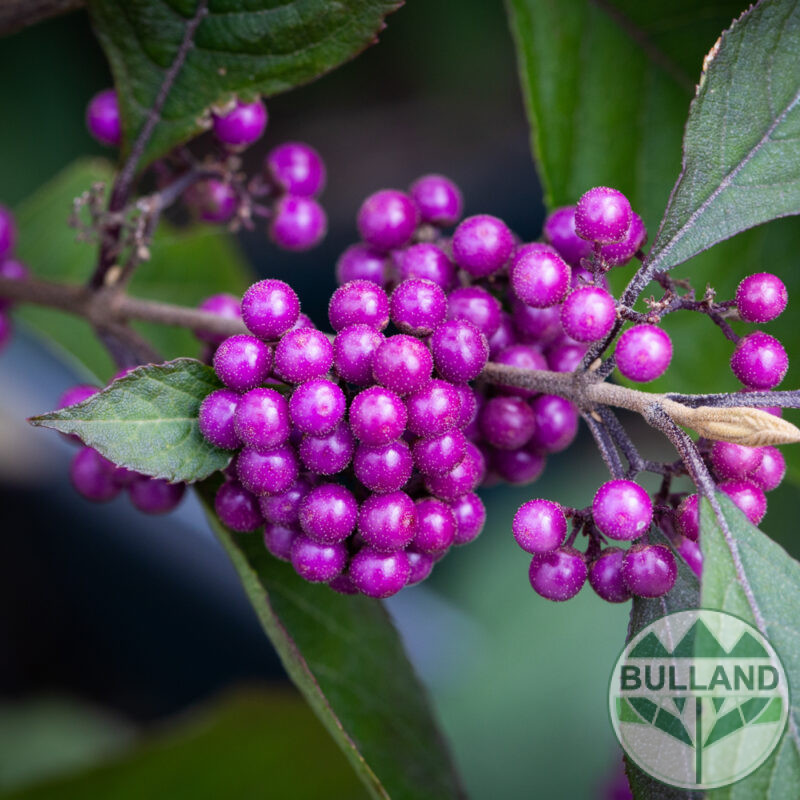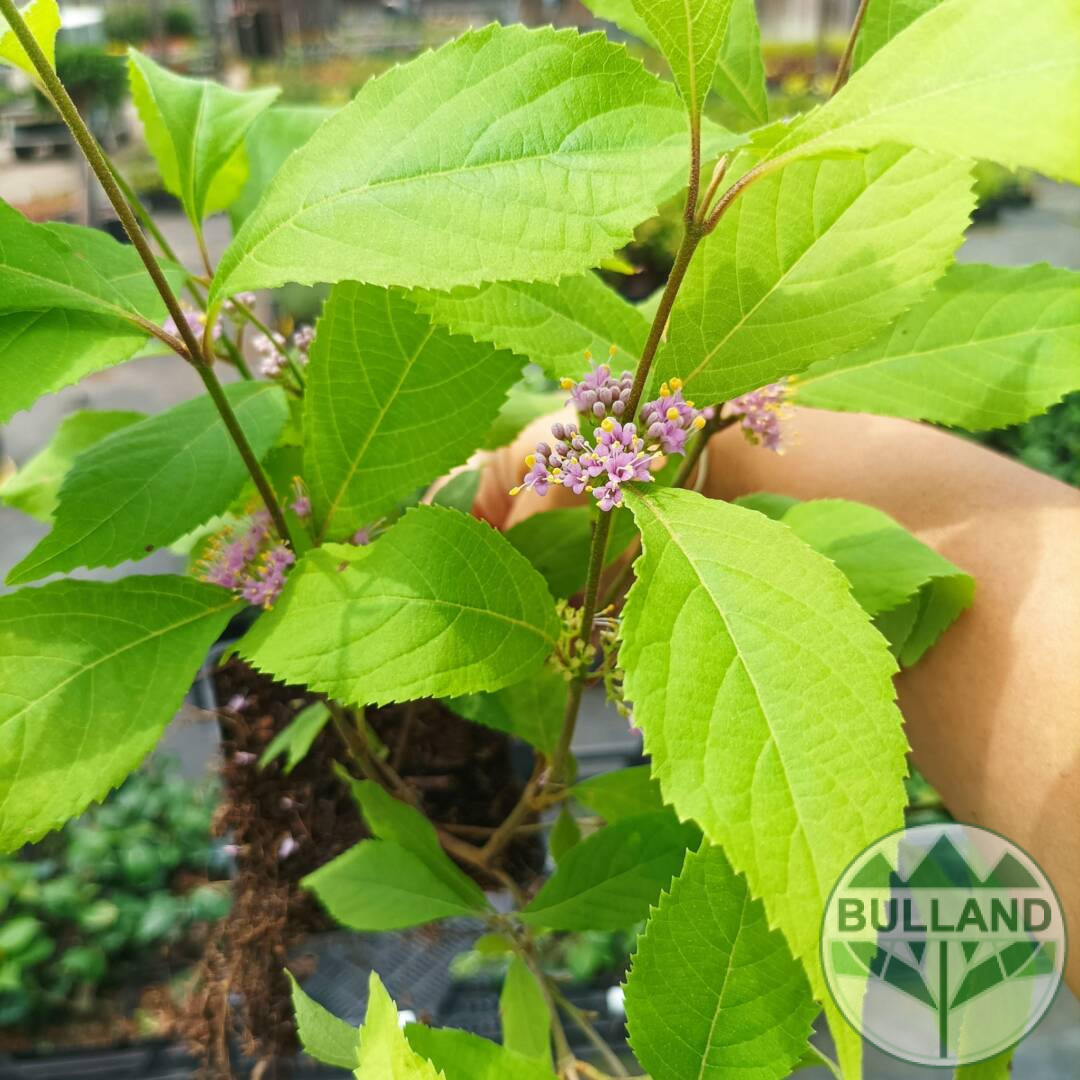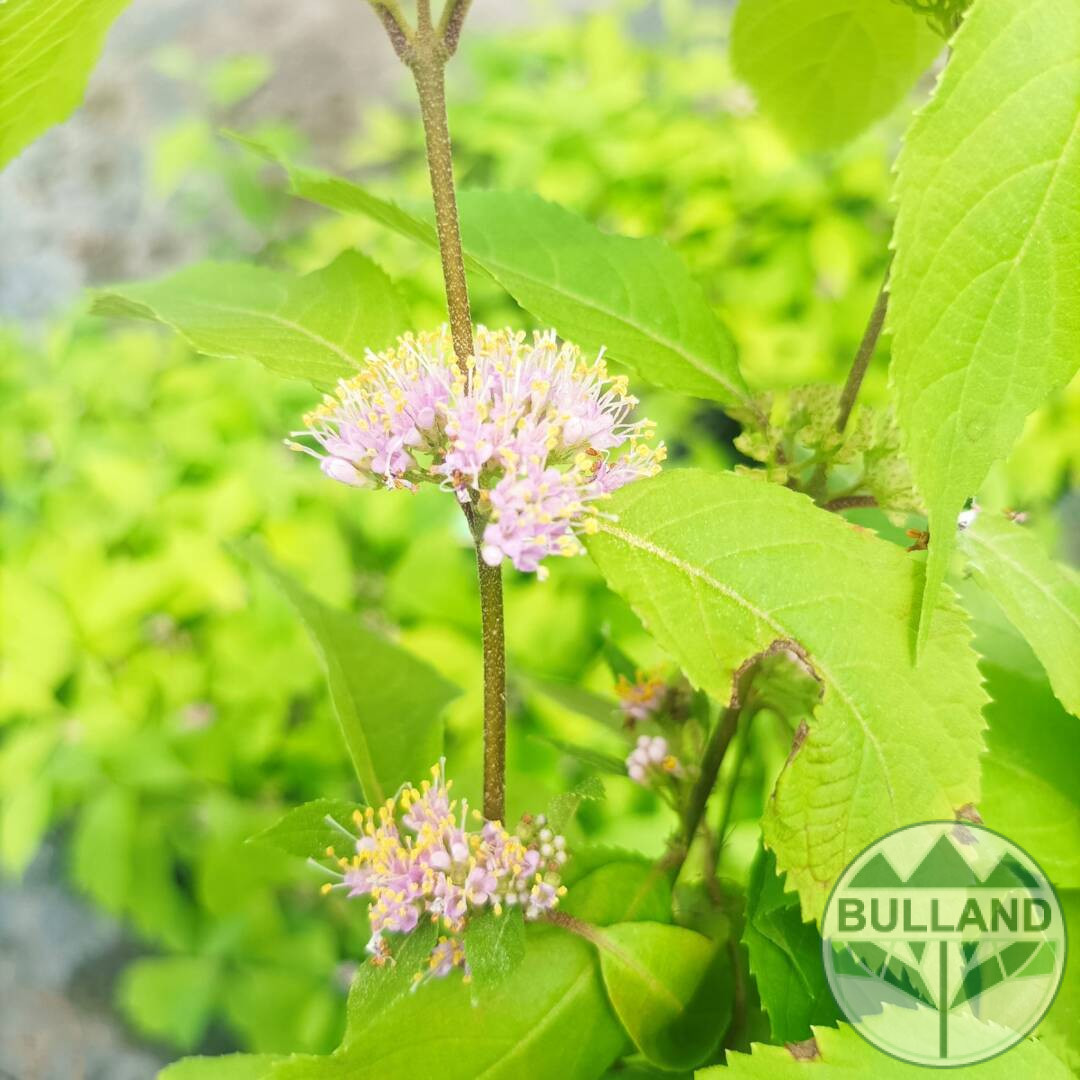Callicarpa, (“Callicarpa Giraldii”)
12.00 лв.
Callicarpa, (“Callicarpa Giraldii”)
One of the best ornamental fruit bushes, Callicarpa bodinieri var. giraldi “Profusion” (Beautyberry) is a medium-sized deciduous shrub, grown primarily for an attractive display of purple fruit, dotting each arching branch like beads on a string. "Profusion" bears clusters of small, lilac flowers on stems in summer. Attractive to bees and butterflies, they are abundantly followed by compact clusters of bright, shiny, violet-purple fruits in early autumn, which continue after the leaves fall and stand out beautifully until the beginning of winter. Adding rich color to the landscape, they make a lovely contrast to the lanceolate foliage, purple leaves, when young, which turn pink in autumn. A spectacular sight in autumn and early winter.
- Holder of the prestigious reward “Garden merit” of the Royal Horticultural Society
- Grows with an upright habit, to 4-6 feet. tall and wide (120-180 cm).
- Full sun to part shade a lover, this plant is best grown in medium, medium, well drained soils. Best flowering and fruiting occurs in full sun. It can become a foot in too much shade. Relatively adaptable to different types of soil, but fertile soil with good drainage is preferred.
- Easy to grow and low maintenance, this plant is affected by very few pests and diseases. It is also rarely bothered by deer.
- Table in mixed shrub borders, foundation plantings. Perfect as well specimen plant or deciduous hedge or screen. The best fruit production is happening, when these cat bushes are planted in groups or en masse (better cross-pollination).
- Blooms for new growth. Little pruning is necessary, apart from removing the older growth of the twigs, to maintain vitality.






